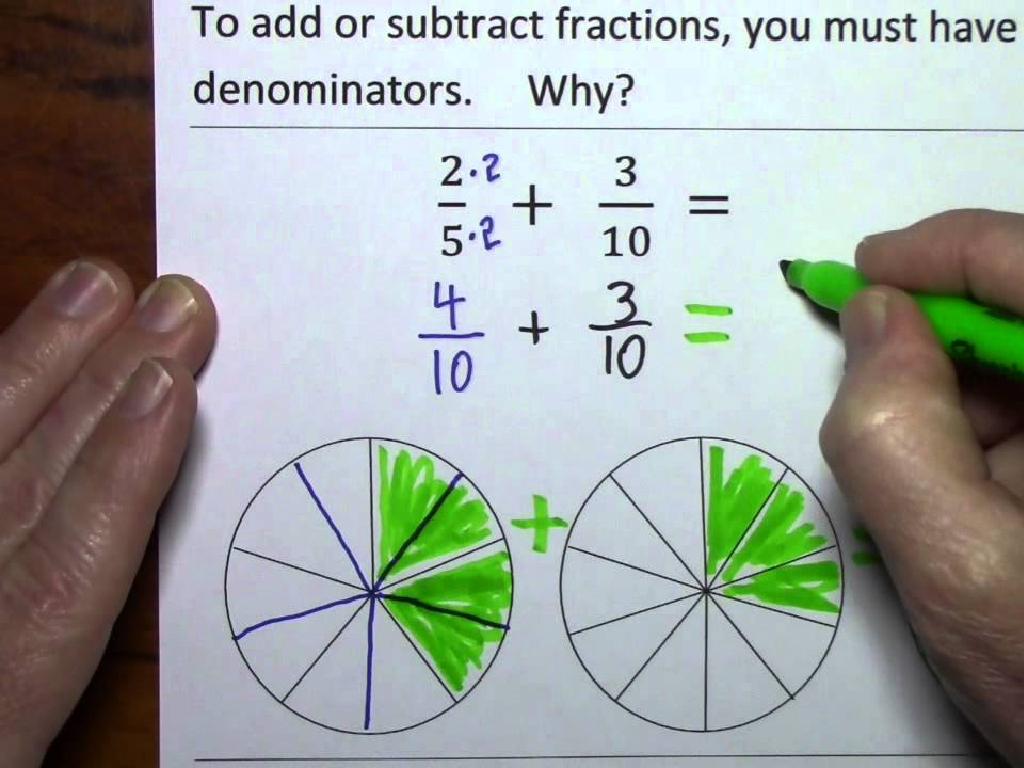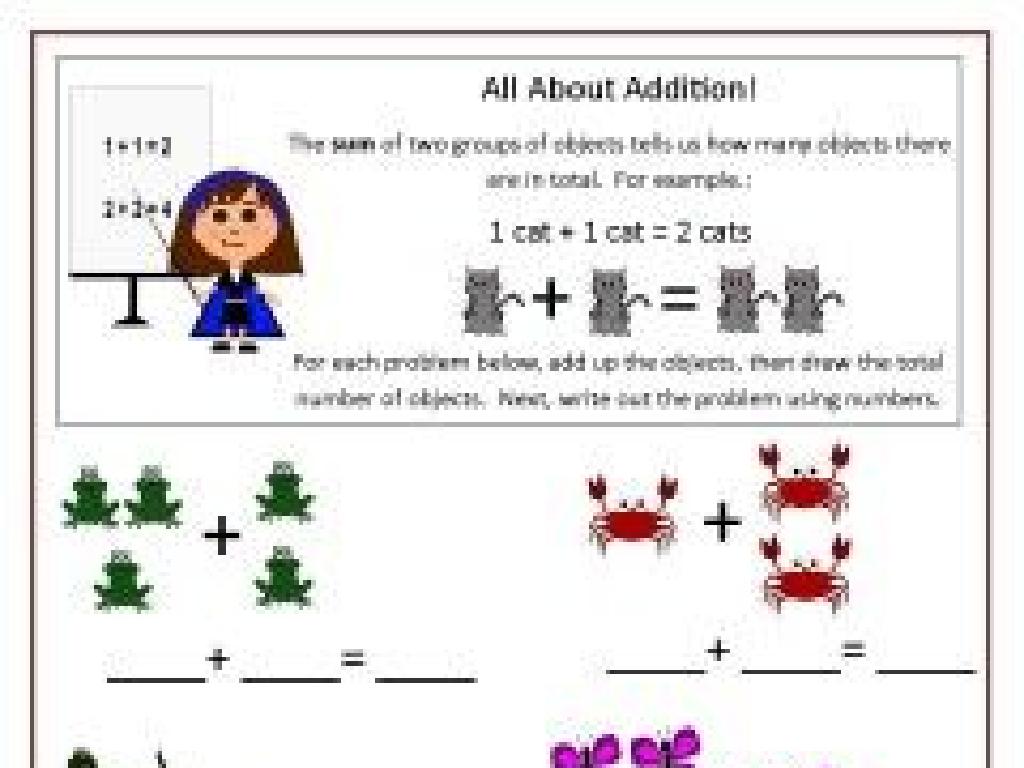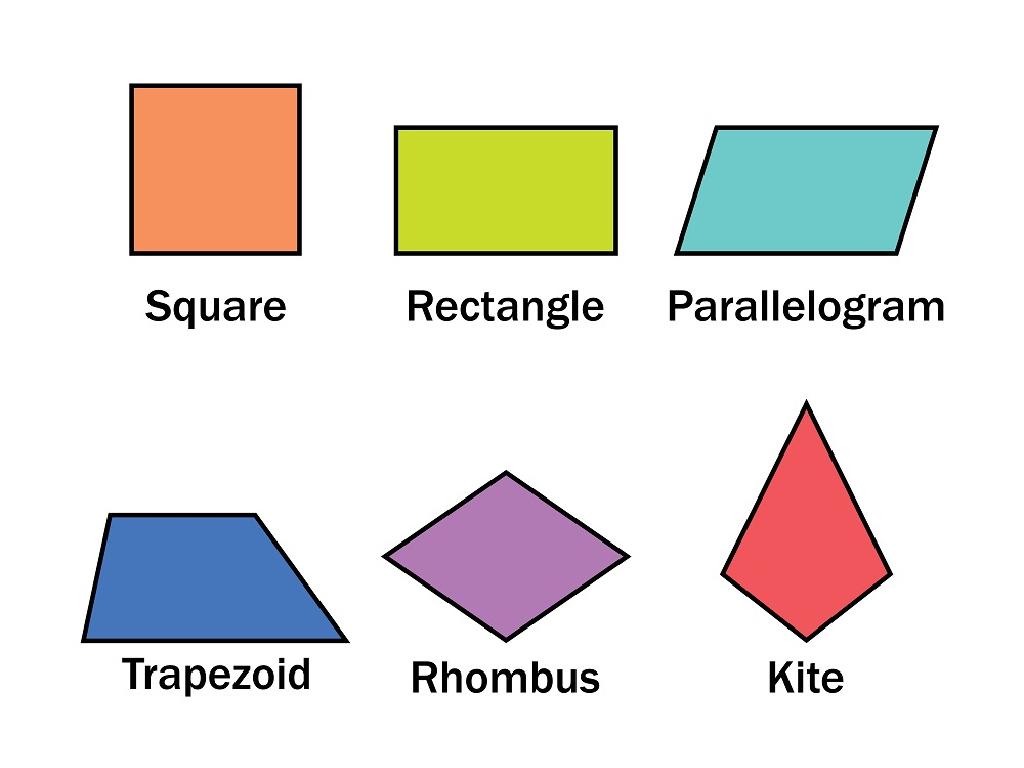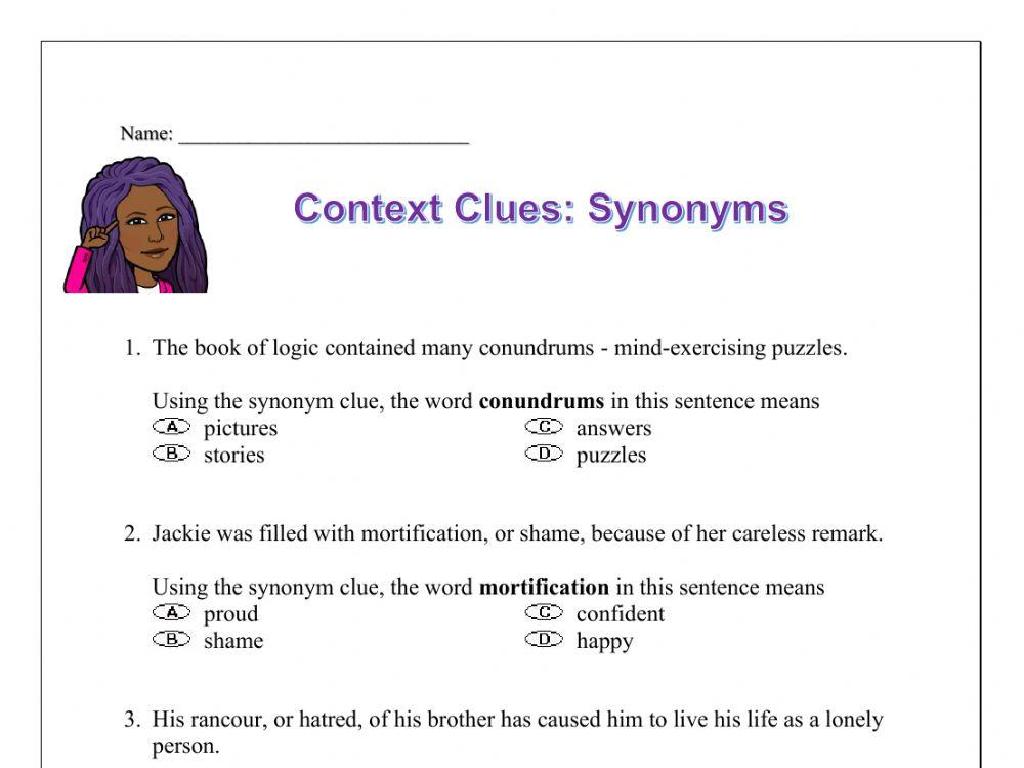Compare Energy Of Waves
Subject: Science
Grade: Sixth grade
Topic: Waves
Please LOG IN to download the presentation. Access is available to registered users only.
View More Content
Welcome to the World of Waves!
– What are waves?
– Waves are disturbances that transfer energy through space or matter.
– Waves in daily life
– Ocean waves, sound waves, and light from a bulb are common examples.
– Measuring wave energy
– Energy in waves is related to amplitude and frequency.
– Today’s focus: Energy comparison
|
Begin the lesson by defining waves as a concept, emphasizing that they are disturbances that move energy from one place to another. Illustrate with everyday examples like the waves we see in water, the sound we hear, and the light that enables us to see. Explain that the energy of a wave can be measured and is influenced by its amplitude (height) and frequency (how often the waves occur). Today’s lesson will focus on comparing the energy of different types of waves, helping students understand that not all waves carry the same amount of energy and the factors that affect this.
Understanding Energy in Waves
– Define energy
– Energy is the ability to do work or cause change.
– Explore forms of energy
– Kinetic, potential, thermal, chemical, and more.
– Relate energy to waves
– Waves carry energy through space or matter.
– Discuss wave energy examples
– Ocean waves: kinetic energy moves through water.
|
Begin the lesson by defining energy as the capacity to do work or cause change, which is a fundamental concept in physics. Discuss the different forms of energy, such as kinetic (motion), potential (stored energy), thermal (heat), and chemical (stored in chemical bonds). Explain how energy is related to waves, emphasizing that waves are a way for energy to travel through space or matter. Use tangible examples like ocean waves to illustrate how kinetic energy is transferred through the water. Encourage students to think of other examples where energy is transferred through waves, such as sound waves carrying energy through the air. This will help them grasp the concept of energy transfer and its importance in understanding wave behavior.
Comparing Wave Energies: Types of Waves
– Mechanical vs. Electromagnetic Waves
– Mechanical waves need a medium, like sound waves in air. Electromagnetic waves don’t, like sunlight.
– Examples of Wave Types
– Mechanical: sound waves, ocean waves. Electromagnetic: light, radio waves.
– Energy Transmission in Waves
– Mechanical waves transfer energy through particles. Electromagnetic waves transfer energy through electric and magnetic fields.
– Comparing Energy of Wave Types
|
This slide introduces students to the two main types of waves: mechanical and electromagnetic. Mechanical waves require a medium to travel through, such as water or air, and include examples like sound and ocean waves. Electromagnetic waves, on the other hand, can travel through a vacuum and include light and radio waves. Discuss how each type of wave transmits energy: mechanical waves move energy through the vibration of particles in the medium, while electromagnetic waves carry energy through oscillating electric and magnetic fields. Encourage students to think about how the different types of waves are present in their daily lives and how the energy of these waves affects the environment and technology.
Exploring Wave Energy
– Understanding key wave characteristics
– Wavelength, frequency, and amplitude are fundamental to waves.
– Relationship between wave features and energy
– High frequency and short wavelength usually mean more energy.
– Observing waves in the real world
– Ocean waves, sound waves, and light waves demonstrate these properties.
– Discussing amplitude, wavelength, and frequency
– Amplitude is wave height; wavelength is crest-to-crest distance; frequency is number of waves per second.
|
This slide aims to help students understand how the characteristics of waves such as wavelength, frequency, and amplitude determine the energy of a wave. Explain that waves with a shorter wavelength and higher frequency carry more energy, while those with a larger amplitude also carry more energy. Use real-life examples like the difference between the sound of a whisper and a shout, or ripples in a pond versus ocean waves, to illustrate these concepts. Encourage students to think of more examples from their daily lives where they can observe these wave properties in action.
Comparing Wave Energy
– Factors determining wave energy
– Wave energy depends on amplitude and wavelength.
– Energy variation in waves
– Compare light waves vs. sound waves.
– Activity: Predict wave energy
– Use examples to guess energy levels.
|
This slide introduces the concept of wave energy and its determining factors, such as amplitude and wavelength. Students will learn that higher amplitude and shorter wavelength result in higher energy. They will compare different types of waves, such as light and sound waves, to understand how energy can vary. The activity encourages students to apply their knowledge by predicting the energy of waves in different scenarios. Teachers should prepare examples of waves with varying amplitudes and wavelengths for the activity and guide students through the prediction process, fostering critical thinking and understanding of wave properties.
Energy Transfer in Waves
– Waves as energy carriers
– Waves move energy without transporting matter
– Energy in different wave types
– Sound waves in air, water waves in the ocean
– Medium’s role in transfer
– Medium affects speed and distance of transfer
– Observing energy movement
|
This slide introduces the concept of energy transfer through waves, emphasizing that waves can carry energy across distances without moving matter. Provide examples like sound waves carrying music to our ears and ocean waves moving energy across the sea. Discuss how the medium solid, liquid, or gas affects the transfer of energy, such as how sound travels faster in water than in air. Encourage students to think of everyday examples of energy transfer, like feeling the warmth from the sun (radiation) or the vibrations of a loudspeaker (sound waves). This will help them grasp the abstract concept of energy transfer in a tangible way.
Measuring Wave Energy
– Instruments for wave energy
– Devices like wave buoys and laser sensors
– Units for measuring energy
– Energy measured in Joules (J)
– Class Experiment: Ripple Tank
– We’ll use a ripple tank to see wave energy in action
– Observing energy differences
|
This slide introduces the concept of measuring wave energy. Students will learn about the instruments used, such as wave buoys for ocean waves and laser sensors for laboratory waves. The unit of measurement for energy is the Joule (J), and this is a key concept for students to understand as it relates to the energy in waves. The class experiment will involve a ripple tank, which will allow students to visualize wave energy and observe how it can be measured. Students should be encouraged to note the differences in wave amplitude and frequency, and how these relate to the energy of the waves produced. The experiment will help solidify their understanding by providing a hands-on experience.
Real-world Applications of Wave Energy
– Wave energy in technology
– Examples: Ocean wave energy converters, sound waves in medical devices
– Environmental impact
– Positive & negative effects on marine ecosystems
– Wave energy’s future
– Innovations in wave energy, potential for clean power
– Class discussion activity
|
This slide aims to explore the practical uses of wave energy and its implications. Students will learn how wave energy is harnessed through technology such as ocean wave energy converters and its use in medical devices through sound waves. Discuss the environmental impact, including both the benefits of a renewable energy source and the potential disruptions to marine life. Look ahead to the future of wave energy, considering ongoing research and the possibility of wave energy as a significant clean power source. Conclude with a class discussion to engage students in thinking critically about the role of wave energy in sustainable development and environmental conservation.
Class Activity: Wave Simulation
– Overview: Create & observe waves
– Objective: Compare wave energy
– Group activity: Simulate waves
– Work together to simulate different waves using materials provided.
– Record observations on energy
– Note the amplitude, wavelength, and frequency to infer energy.
|
This activity is designed to help students understand the concept of wave energy through hands-on experience. Divide the class into small groups and provide each with the necessary materials to create wave simulations, such as ropes or slinkies. The objective is for students to observe and compare the energy of different waves they generate. They should pay attention to how changing variables like amplitude, wavelength, and frequency affects the energy of the waves. Encourage each group to record their observations and discuss the outcomes. Possible variations of the activity could include changing the tension in a rope to create waves with different energies or using water in a ripple tank to visualize wave patterns. This practical application reinforces theoretical knowledge and enhances understanding of wave properties.
Conclusion: Energy of Waves Recap
– Summarize wave energy concepts
– Review learning objectives
– Open floor for Q&A
– Ask any lingering questions about wave energy
– Encourage curiosity and questions
– No question is too small, every query is welcome
|
As we wrap up today’s lesson on the energy of waves, let’s revisit the key concepts we’ve learned. We explored how energy travels through waves and how different factors like amplitude and wavelength affect a wave’s energy. Reflect on the learning objectives to ensure students have a clear understanding of the topic. Open the floor for a question and answer session, encouraging students to ask any questions they may have, ensuring they leave the class with a solid understanding of wave energy. This is also an opportunity to assess student comprehension and to reinforce the day’s material.





